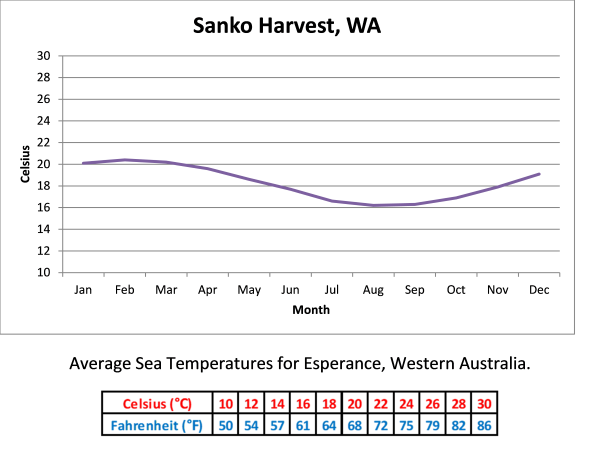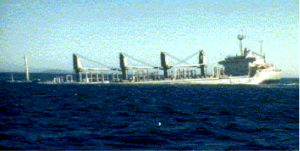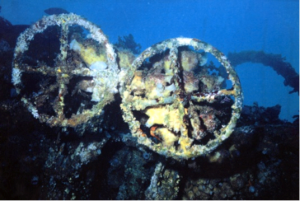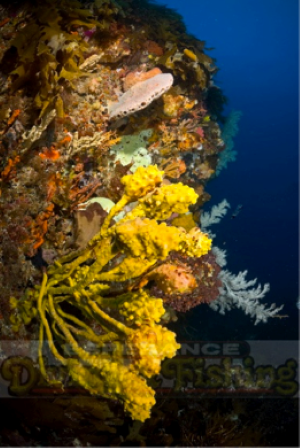SANKO HARVEST
|
| Type of dive: |
|
Wreck |
| Snorkelling: |
|
No, too deep! |
| Scuba: |
|
Advanced |
| Access: |
|
Boat only (1.5 hours) |
| Depth: |
|
18 – 40 metres (60-130’) |
| Visibility: |
|
20 – 40 metres (65-130’) |
| Water temperature: |
|
16 – 21°C (61-70°F) |
| Seasonal: |
|
No, but March to May is best |
When the Sanko Harvest struck a reef near Esperance in 1991, a near environmental disaster became a goliath windfall for scuba divers.
The bulk carrier Sanko Harvest was sailing to Esperance, carrying phosphate, 570 tons of bunker fuel and 74 tons of diesel, when she struck Harvest Reef near Hood Island some 37 kilometres (20 nmi) from Esperance.
Hood Island is one of over 140 islands making up the extensive and spectacular Recherché Archipelago in the south east of Western Australia.
The granite islands around Esperance provide divers with spectacular temperate water diving including drop offs, underwater caves, swim-throughs and, of course, the Sanko Harvest.
Sanko Harvest is the biggest shipwreck dive in Australia and claims to be the second biggest in the world behind the President Coolidge in Vanuatu.
It is simply huge!
Unfortunately, as a result of Southern Ocean swells, the wreck is now in three sections and has large areas of twisted sharp metal and cables.
Whilst divers are able to carefully explore the bridge and deck structures on this huge ship wreck, disorientation is a potential problem due to its enormous size.
Penetration is not recommended without proper training and equipment.
The wreck site is protected by a 500 metre (550 yd) no fishing zone, and as a result, it is home to an enormous array fish life including blue groper, Queen snapper, red snapper, harlequin fish, Port Jackson sharks and blue devil fish.
Kelp and other southern marine plants cover the wreck, as well as an amazing array of invertebrate life including sea tulips, hard corals and sea stars.
It is not unusual to be visited by seals, dolphins and the occasional humpback whale.
Esperance is also a home of the rare leafy seadragon.
Copyright © 2024 Steve Sinclair
Vessel details:
Type: Bulk Carrier
Launched: Panama 1985
Sank: 1991 (struck Harvest Reef)
Length: 167.6 metres (550’)
Beam: 27 metres (89’)
Displacement: 33,024 tons
Speed: 15.8 knots
Crew: 20
Passengers: Nil
Other great dive sites to visit while you are there:
Esperance Jetty (also at night), Lapwing wreck, Tanker Jetty and dozens of off-shore islands.
Local dive services:
|
|
ESPERANCE DIVING & FISHING |
Other services:
|
|
Need somewhere to eat, drink or stay? |
 |
BLAST EXPERIENCES |







OTHER INFORMATION
LOCATION
State or Territory:
Western Australia
Nearest City:
Perth
Nearest Regional City:
Esperance
Nearest Town:
Not relevant
HOW TO GET THERE
Air:
Nearest International Airport:
Perth
Nearest Domestic/Regional Airport:
Esperance
Road:
Perth to Esperance:
Just under 8 hours (720 km/450 mi) via State Route 40 and National Route 1
Bus:
From Perth
Train:
Not available
Ferry:
Not relevant
THINGS TO DO
Off Road Driving
Abseiling
Trail bike riding
Deep Sea Fishing
Sea Kayaking
Sand Boarding
Surfing
Wind Surfing
Hiking
Wildlife


















